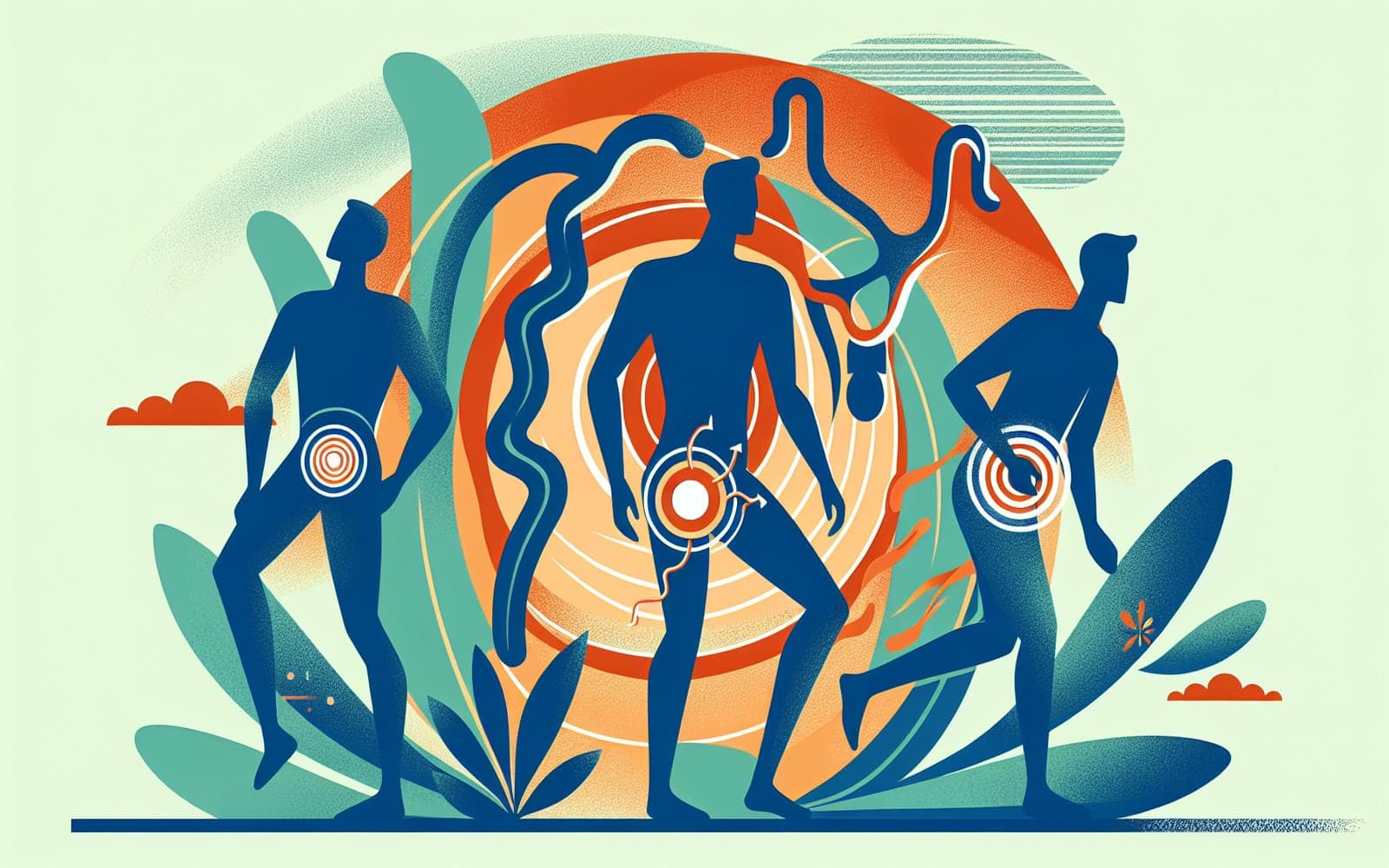Breaking the Cycle: Effective Treatments for Chronic Pelvic Pain in Men
Published: Jul 12, 2024
Chronic Prostatitis/Chronic Pelvic Pain Syndrome (CP/CPPS) can be a frustrating condition, but there's hope. A variety of treatments are available to help manage symptoms and improve quality of life.
Contents
Medication Options
Doctors often start treatment with medications. Alpha-blockers, which relax muscles in the prostate and bladder, are a common first choice. Anti-inflammatory drugs can help reduce pain and discomfort. Some men benefit from medications that target nerve pain, like pregabalin. It's important to work with your doctor to find the right combination for you.
Physical Therapy and Exercise
Many men with CP/CPPS have tension in their pelvic floor muscles. Physical therapy can help relax these muscles and reduce pain. Techniques might include stretches, massage, and biofeedback. Regular aerobic exercise has also been shown to improve symptoms in some men.

Mind-Body Approaches
Stress and anxiety can worsen CP/CPPS symptoms. Cognitive behavioral therapy (CBT) can help men manage these emotional factors. Some studies have shown that acupuncture may provide relief for some patients. Relaxation techniques like meditation or yoga might also be beneficial.
Frequently Asked Questions
Generally, no. CP/CPPS is not caused by bacteria.
It varies, but improvement often takes several weeks to months.
Some men find certain foods worsen symptoms, but evidence is limited.
A Personalized Approach
The most effective treatment for CP/CPPS often involves a combination of approaches tailored to each individual.
References
- Thakkinstian A, Attia J, Anothaisintawee T, Nickel JC. α-blockers, antibiotics and anti-inflammatories have a role in the management of chronic prostatitis/chronic pelvic pain syndrome. BJU Int 2012; 110:1014.
- Anderson RU, Wise D, Sawyer T, et al. 6-day intensive treatment protocol for refractory chronic prostatitis/chronic pelvic pain syndrome using myofascial release and paradoxical relaxation training. J Urol 2011; 185:1294.
- Giubilei G, Mondaini N, Minervini A, et al. Physical activity of men with chronic prostatitis/chronic pelvic pain syndrome not satisfied with conventional treatments--could it represent a valid option? The physical activity and male pelvic pain trial: a double-blind, randomized study. J Urol 2007; 177:159.
This article has been reviewed for accuracy by one of the licensed medical doctors working for Doctronic. Always discuss health information with your healthcare provider.
AI Doctor Visit Required
Appointments available 24/7
15-min consultation. No hidden costs.
AI Doctor Visit Required
For safety reasons we have been forced to end this consultation.
If you believe this is a medical emergency please call 911 or your local emergency services immediately.
If you are experiencing emotional distress, please call the the Suicide & Crisis Lifeline at 988 or your local crisis services immediately.
Contact us
You can also email us at help@doctronic.ai
We aim to reply within 5-7 days
How likely are you to recommend Doctronic to friends or family?


